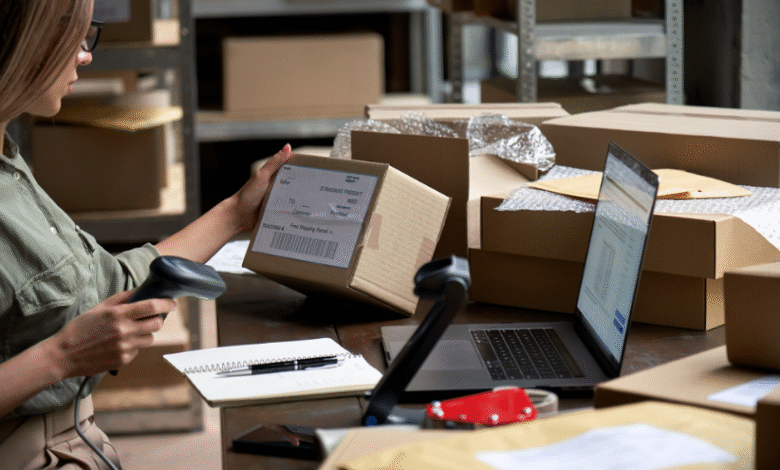Why Quality Contact Cards Still Matter in a Digital World

Picture this: you’ve just wrapped up an amazing conversation at a conference. You connected with someone who could become a future collaborator, client, or even a friend. As the conversation winds down, you both instinctively reach for your phones. But instead of typing awkwardly into screens, imagine handing them a beautifully designed contact card. They glance at it, smile, and slip it into their pocket. Later, when scrolling through their things, your card pops out—and so do you.
In a world that’s increasingly digital, this little piece of cardstock still carries remarkable weight. It might seem surprising, but quality contact cards continue to thrive as one of the most timeless and effective tools for networking. They bridge the gap between the personal and the professional, blending old-school charm with modern-day relevance.
Let’s explore why these cards matter, what makes them effective, and how technology has actually made them even more powerful today.
The Tangibility Factor: Why Physical Still Wins
We live in an era of endless notifications, social media connections, and digital overload. And while it’s convenient to “add someone on LinkedIn” or exchange emails, those interactions often blur into the noise. A physical card, on the other hand, stands out precisely because it’s tactile.
There’s something about holding a card in your hand that makes it memorable. The texture of the paper, the weight of the cardstock, even the design—it all communicates something about you and your brand. Unlike a digital profile, a card is a physical reminder that lingers on a desk, wallet, or fridge.
Think about it this way: digital contacts can be forgotten with a swipe, but a contact card asks to be kept. That tangibility alone can make you stand out in someone’s mind long after the initial meeting.
More Than Just Contact Information
At first glance, a card may seem like a simple way to share your name, phone number, and email. But the truth is, a quality contact card goes far beyond that. It’s a branding tool, a conversation starter, and sometimes even a statement of creativity.
- Brand Identity: A well-designed card carries your colors, logo, and style, reinforcing your professional identity.
- First Impressions: People often judge the quality of your work by the quality of your card. A flimsy, poorly designed card can feel careless. A polished one? It signals attention to detail.
- Memorability: Clever touches—like a striking design, embossed lettering, or even a clever tagline—make your card stand out.
For entrepreneurs and professionals alike, your card often becomes the first mini-version of your portfolio that people experience.
See also: Blockchain and Cryptocurrency: Revolutionizing the Economy
Technology Has Changed the Game
Here’s where things get interesting: instead of making cards obsolete, technology has actually made them better. Designing and printing high-quality cards used to mean hiring a designer and working with a print shop. Today, you can design cards yourself with user-friendly tools like Adobe Express, experimenting with layouts, fonts, and colors until they feel just right.
And when you’re ready, services for business cards printing bring your digital designs to life with professional quality. The result? Cards that look sharp, modern, and completely aligned with your personal brand—without requiring a huge budget or design background.
Technology also adds a modern twist: QR codes, for example, allow you to link directly to your website, portfolio, or LinkedIn page. It’s the perfect blend of tangible and digital—hand someone a card, and they’re one scan away from learning more about you.
Real-World Examples of Cards That Work
Let’s make this real with a few stories:
- The Minimalist Designer: A graphic designer I know created a card with a plain white background, her name in bold typography, and a single QR code. The simplicity mirrored her design philosophy, and it immediately communicated her style without clutter.
- The Creative Entrepreneur: Another friend, who runs a small artisanal bakery, used recycled kraft paper for her cards with a subtle embossed wheat symbol. Not only did it reflect her brand’s eco-conscious values, but people often commented on how unique and tactile the card felt.
- The Tech Consultant: He added a holographic finish to his logo, making his otherwise simple card shimmer in the light. At networking events, people remembered “the guy with the shiny logo card,” which opened doors for follow-ups.
Each example shows that cards aren’t just about sharing information—they’re about leaving an impression.
When Quality Really Matters
So, when should you invest in a high-quality contact card rather than relying on digital tools alone?
- Networking Events: Conferences, trade shows, and industry meetups are the perfect places for cards. They give you something tangible to leave behind when you meet dozens of people in a short time.
- First Meetings with Clients: Handing over a card during an introduction feels professional and intentional.
- Creative or Brand-Centered Roles: If you’re in a field like design, marketing, or photography, your card becomes part of your creative identity.
- Cross-Cultural Contexts: In some cultures, especially in Asia, the exchange of business cards is a sign of respect and professionalism.
The point is: quality cards elevate your presence, especially when the stakes are high.
Tips for Creating Cards That Stand Out
Ready to create or refresh your own contact cards? Here are some practical tips to keep in mind:
- Less Is More: Focus on the essentials—name, role, and one or two contact methods. Don’t overwhelm with information.
- Use Your Brand Colors: Consistency across your card, website, and social profiles reinforces your identity.
- Invest in Paper Quality: Thicker stock feels more professional and durable. The way a card feels in someone’s hand makes a difference.
- Experiment with Finishes: Matte, glossy, embossed, or textured finishes can add subtle sophistication.
- Add a Modern Touch: QR codes or social handles (only the ones you actively use) keep your card relevant in a digital-first world.
A Fresh Perspective
Here’s the thing: the rise of digital networking hasn’t replaced contact cards—it’s made them more important. Why? Because in a sea of online connections, physical cards offer something different: presence. They’re not just about exchanging information; they’re about creating moments.
A quality card says, “I thought about this interaction. I value it enough to leave you with something meaningful.” And that kind of thoughtfulness still matters, perhaps even more now than ever before.
Wrapping It Up
In our hyper-connected, screen-heavy world, quality contact cards are more than just paper—they’re small but mighty reminders of who you are and what you stand for. They carry your brand, your story, and your attention to detail in a way that digital connections often can’t.
So next time you’re preparing for a meeting, event, or casual introduction, don’t underestimate the power of slipping a well-designed card into someone’s hand. It’s not just a tradition—it’s a timeless tool that keeps you remembered in a world where attention is fleeting.




